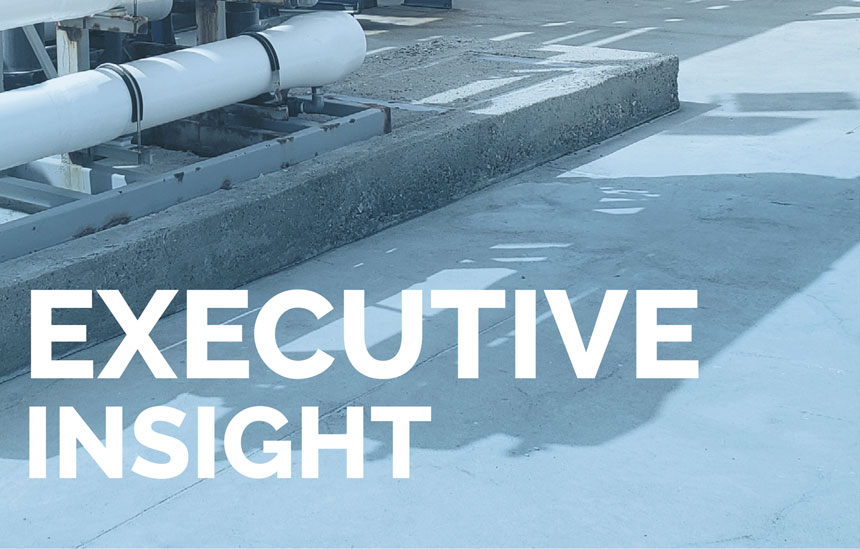Published on IDRA Global Connections Summer 2019 Issue
By Olaf Krohg, Seven Seas Water
Water typically represents less than five percent of a mine’s operating costs, but an unreliable supply of water can cripple operations and increase the cost of production, as well as the cost of capital.
Our team’s experience over the past four decades holds valuable lessons about producing high quality process water for industrial offtakers, including mines, power plants and refineries. For a mine, reduced water availability leads to lost revenues and increased cost per unit of mine output. Poor water quality can lower mining efficiency. Interruption and instability of water plant operations result in volatile water costs. These are headaches that can be avoided.
Building for the Long Run vs. Short-Term Profits
The traditional vendor-client relationship in greenfield desalination development is between an EPC contractor, a smattering of advisors and a third-party O&M vendor. We have experienced the often-debilitating impact of shortcuts and cost-reducing measures taken by the EPC contractor to maximize its profits. This leaves the O&M contractor with the challenges of running a badly designed or built plant.
When experiencing particularly challenging civil works conditions, an EPC contractor we know chose not to blast solid rock to build the gravity-fed intake as designed. The O&M operator was left with a hydraulically imbalanced and rapidly fouling intake. During the EPC warranty period, finger-pointing between EPC and O&M parties was inevitable. Postwarranty, the O&M contractor arguably benefitted from invoicing for repairs.
Finger-pointing and disputes between EPC and O&M contractors often continue well into the plant’s operating life. When both EPC and O&M contracts are supplied by different arms of the same parent company, the frustrated customer is often left on the sideline. This is, in my opinion, a broken business model based on maximizing short-term profits over the long-term needs of the customer.
Operating and Maintaining Desalination Plants
We were introduced to a situation where a mining company had a SWRO/BWRO plant designed and built by a local contractor. Most of the components for a RO plant are now available “off-the-shelf” in the international market. Cheaper alternatives for pre-treatment design, component redundancy and metallurgy are often utilized – particularly by inexperienced contractors.
“How hard can it be to build a RO plant?” seems to have been a motivating factor for this low bid. The plant was initially operated by a local, third-party O&M contractor. The mining company experienced low water availability and the agony of fingerpointing between the EPC and O&M contractors. The mine management decided to hire its own team of RO plant operators to remove the misalignment of interests (“how hard can it be to operate a desal plant?”), only to learn that hard-earned expertise is, in fact, helpful.
After more frustration, the mine fired the local O&M contractor and hired a “reputable,” international, third-party O&M contractor to rectify the frustratingly low water availability and high operating costs.
We met an operations team using Google searches to troubleshoot while waiting for their supervisors to arrive in the Latin American location from their European base. Rather than a preventive maintenance program, a “let’s replace what’s about to break as quickly and cheaply as we can” attitude prevailed.
Throughout this ordeal, the extensive conveyance pipeline was corroding because the various parties neglected to operate the post-treatment system in an attempt to reduce operating costs. Maintenance requirements for the product distribution systems pump station had been completely ignored. Both pipeline and pump station had to be replaced at great expense while the plant continued to operate at 30% of capacity.
While Seven Seas Water did not acquire this particular plant, we saw a tremendous opportunity to improve it and presumably thereby remove the mining company’s headache. “How hard can it be to operate a desal plant?” – the experience curve is long and steep.
Producing and treating water at a mine operating site or a refinery necessitate a commitment to EHS requirements significantly beyond those of a traditional SWRO plant located on a remote beach. At our SWRO facility in Peru serving a phosphate mine, we employ 46 operators to run the plant 24/7. A similar, stand-alone SWRO facility serving a municipality would employ 10-15 operators. Our team has successfully adopted the strict safety procedures required by the mine, including clear division of labor (which limits cross-training), extensive medical and safety training, and a regimented recording protocol.
Our team recently won the coveted first prize at the “Carnival de la Seguridad” awarded in competition with teams from the 2,400 operators and employees at the mine site.
At our plants located at the petroleum refineries in St. Croix, US Virgin Islands and Curaçao, as well as at our plants located at power plant facilities in St.
Thomas, US Virgin Islands and Sint Maarten, our plant operations are comingled with onsite, propanefueled power production and natural gas storage. Our operators have become accustomed to demanding safety requirements that include frequent emergency drills, wearing fire retardant clothing, strict access control, and extensive emergency procedures.
According to the rating agency Moody’s, water scarcity or even the perceived risk of unreliable water supply can impact a mining company’s cost of capital. Supplying mines and petrochemical facilities with high quality process water is a demanding challenge requiring building, maintaining and operating the plant for the highest reliability and adhering to strict and industry-specific EHS requirements. These challenges are best served by the most experienced team operating under business principles that align the offtaker’s interests with those of all stakeholders. Water supply should be a long-term commitment between all stakeholders.

